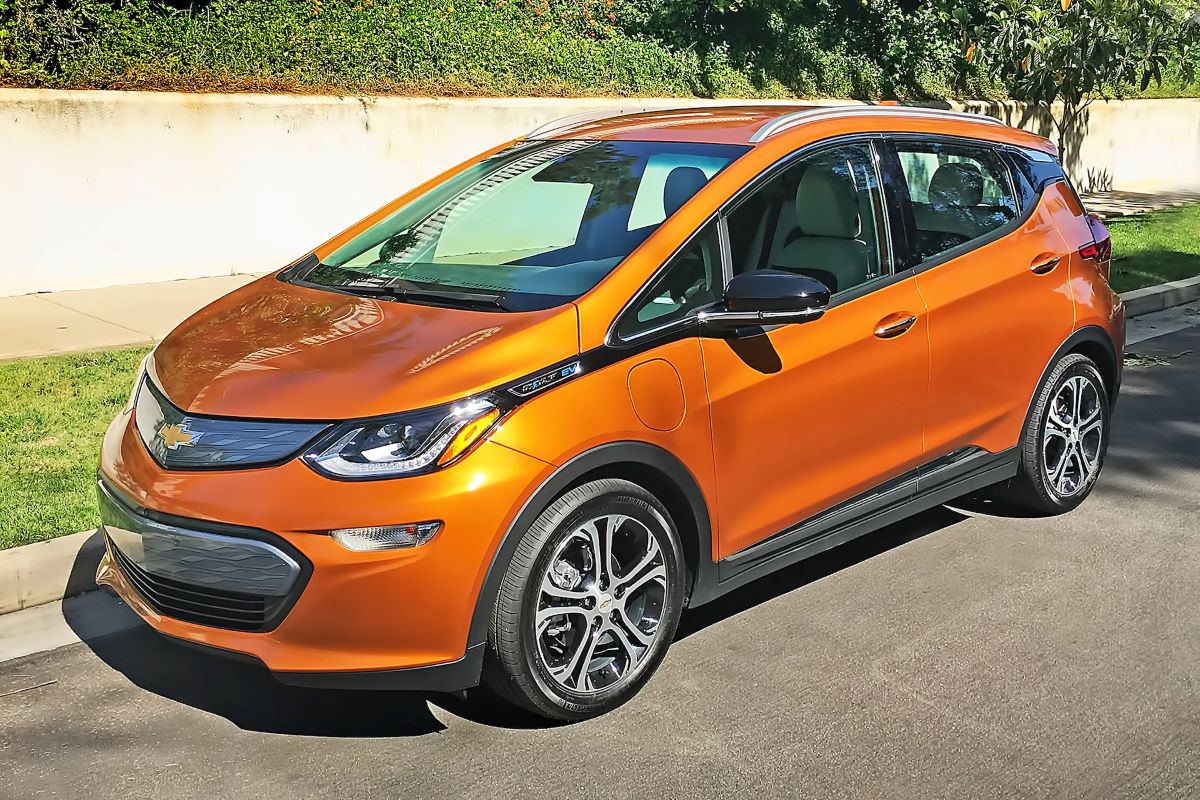The placement of charging ports on electric vehicles has emerged as one of the most overlooked yet critically important design decisions in the EV revolution.
While manufacturers focus heavily on battery capacity, range, and performance, the humble charging port location can make or break the daily ownership experience.
As electric vehicles transition from niche products to mainstream transportation, the convenience of charging has become paramount to widespread adoption.
The positioning of a charging port affects everything from home garage setup to public charging station accessibility, highway travel convenience, and even resale value.
A well-placed port allows for seamless integration into daily routines, while an awkwardly positioned one can turn routine charging into a frustrating ordeal.
Tesla recommends that “all vehicle manufacturers standardize charge port locations to the rear driver side or front passenger side” for optimal Supercharger network compatibility, but the reality is far more complex.
The ideal charging port location must balance multiple factors: cable reach at various charging stations, parking lot configurations, home charging setups, pedestrian safety, and aesthetic considerations.
BMW’s research concluded that placement would be best on the right side wall of the garage, where customers can easily plug in and walk back around the car without the cable being in their way. However, what works perfectly in a controlled home environment may create challenges at public charging stations with varying layouts and cable lengths.
As charging infrastructure continues to expand and evolve, manufacturers are beginning to recognize that port placement directly impacts user experience and brand loyalty.
Some companies are even relocating ports in mid-generation updates, as seen with Kia moving the charging port on the 2025 EV6 to the left side of the vehicle for smoother Supercharger access.
This comprehensive analysis examines both the champions and the failures in EV charging port design, providing insights for current and prospective EV owners navigating this rapidly evolving landscape.
5 EVs with Best Charging Port Locations
These exceptionally designed electric vehicles feature strategically positioned charging ports and precision-engineered access panels that enable effortless cable connection through years of daily charging cycles across various parking scenarios and weather conditions.
Their thoughtful engineering includes optimal height placement, protective door mechanisms, and intuitive positioning that resists the cable management challenges typically created by tight parking spaces or awkward charging station orientations.
From cramped urban garages that demand precise maneuvering to busy public charging stations where quick connections matter, these remarkable port designs continue facilitating smooth charging experiences without developing access complications or cable strain issues. Owners report stress-free charging routines with these well-positioned connection points—a convenience-enhancing quality feature that proves its worth through reduced charging time and eliminated positioning frustrations throughout ownership.
1. Tesla Model 3/Y – Rear Left Corner Perfection
Tesla’s placement of the charging port in the rear left corner of the Model 3 and Model Y represents perhaps the most thoughtfully engineered charging port location in the industry.
This positioning has become the gold standard against which all other EVs are measured, and for good reason. The rear left placement offers unparalleled versatility across virtually every charging scenario imaginable.
The genius of Tesla’s design becomes immediately apparent at Supercharger stations, where the company has strategically positioned charging cables to perfectly accommodate this port location.
The short, direct cable run eliminates the awkward stretching, twisted cables, and blocked access issues that plague many other EVs at Tesla’s rapidly expanding network.
This creates a seamless, almost gas station-like experience where drivers can pull up, plug in, and walk away without wrestling with unwieldy cables or repositioning their vehicle.
Home charging scenarios benefit equally from this placement. Whether installing a wall charger in a garage on the right or left side, the rear left port location provides excellent accessibility without requiring the cable to stretch across the vehicle or create pedestrian hazards.
The positioning allows owners to park nose-in or back-in as preferred while maintaining easy access to the port. The rear placement also keeps the charging cable away from typical pedestrian pathways around the vehicle, reducing tripping hazards and maintaining a cleaner appearance.
Public charging compatibility represents another major advantage of Tesla’s approach. At Level 2 destinations chargers, shopping center installations, and workplace charging stations, the rear left placement accommodates the widest variety of parking configurations.
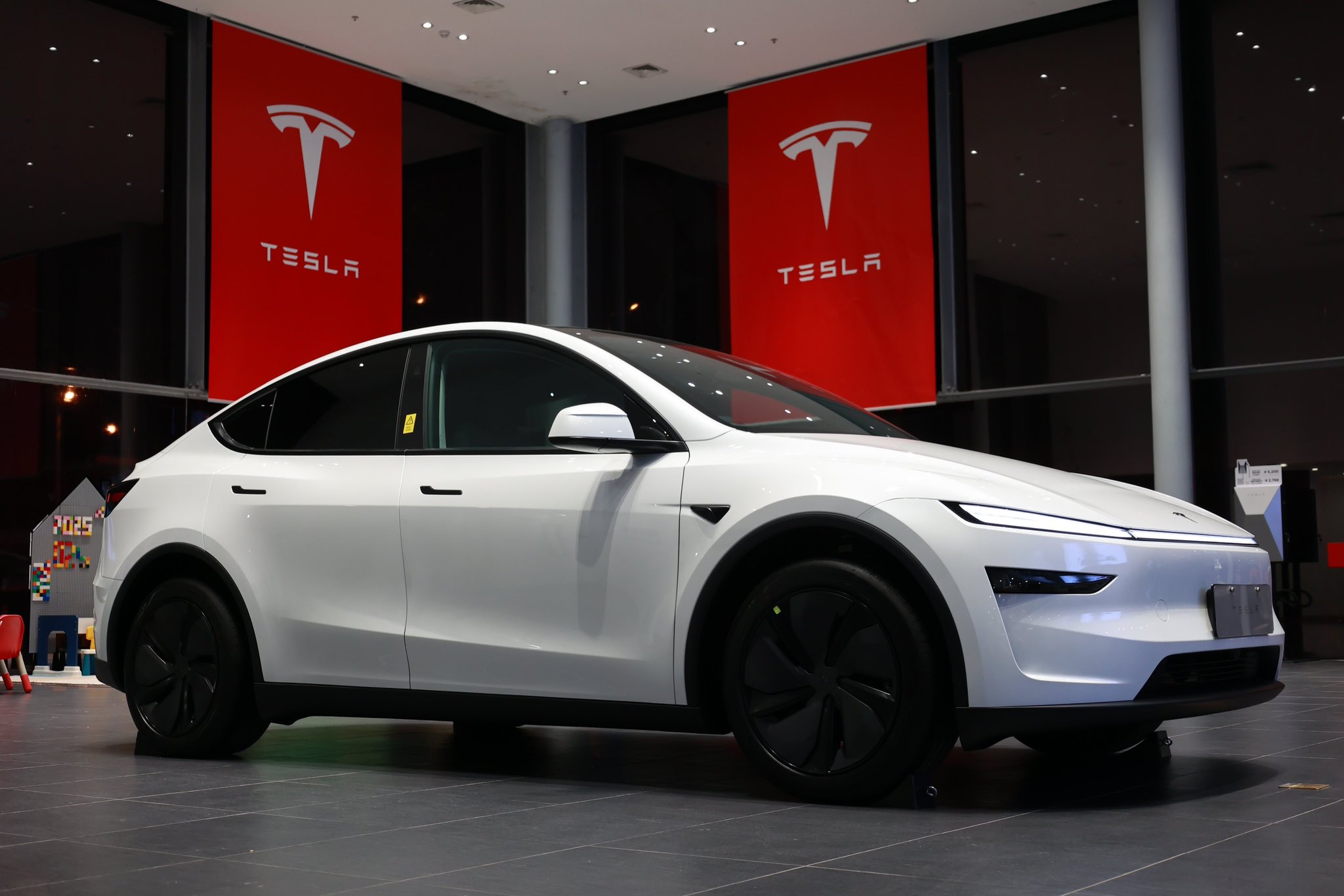
Whether pulling through a charging spot or backing in, the port remains accessible without requiring specific parking orientations that might conflict with traffic flow or other vehicles.
The aesthetic integration of Tesla’s port design deserves particular recognition. The flush-mounted port door maintains the vehicle’s clean lines while providing weather protection for the charging connection.
The subtle LED lighting provides clear indication of charging status without being ostentatious, and the motorized door operation adds a premium feel that reinforces the overall quality perception.
From a safety perspective, the rear left placement minimizes exposure to vehicle traffic when charging at roadside locations or busy parking areas.
Users can access the port from the relative safety of the parking space rather than stepping into vehicle travel lanes, as sometimes required with front-mounted ports. This consideration becomes particularly important at highway charging locations where traffic speeds and volumes create additional risks.
The strategic positioning also facilitates easier cable management and storage when using portable charging equipment. The rear location allows cables to be routed around the vehicle’s perimeter rather than across walking paths, and the left-side placement accommodates the typical garage layouts found in most homes where electrical panels are commonly located.
Tesla’s influence on industry standardization cannot be overstated. Their recommendation for manufacturers to standardize on “rear driver side or front passenger side” locations stems directly from the proven success of their implementation.
As more manufacturers adopt Tesla’s NACS charging standard, the wisdom of this port placement becomes even more apparent, creating a virtuous cycle of improved compatibility across the entire charging ecosystem.
2. Porsche Taycan – Front Right Engineering Excellence
Porsche’s decision to position the Taycan’s charging port on the front right fender represents a masterclass in German engineering precision applied to EV design.
This placement strikes an exceptional balance between form and function, creating an optimal charging experience while maintaining the brand’s signature aesthetic excellence.
The front right location has proven remarkably versatile across diverse charging scenarios while reinforcing Porsche’s commitment to driver-centric design philosophy.
The front-mounted position offers immediate accessibility advantages that become apparent in daily use. Unlike rear-mounted ports that require walking around the vehicle to check connection status or cable positioning, the Taycan’s front placement keeps everything visible from the driver’s position.
This visibility proves invaluable when aligning with charging stations, particularly in tight spaces or challenging weather conditions where precision parking becomes critical.
Porsche’s engineering team considered the diverse landscape of charging infrastructure when selecting this position. At DC fast charging stations, the front right placement accommodates both nose-in and angled parking approaches, providing flexibility that proves essential at busy locations.
The positioning works exceptionally well with high-power charging stations that often feature shorter, more robust cables designed for rapid charging sessions. The reduced cable run length enhances charging efficiency and minimizes power losses that can occur with longer cable runs.
Home charging integration showcases another strength of Porsche’s approach. The front right placement accommodates various garage configurations and wall charger installations with remarkable adaptability.
Whether parking in a narrow garage, a wide driveway, or an urban parking space, the port remains easily accessible without requiring specific vehicle positioning. The front location also eliminates the need to back into charging spaces, which many drivers find more comfortable and natural.
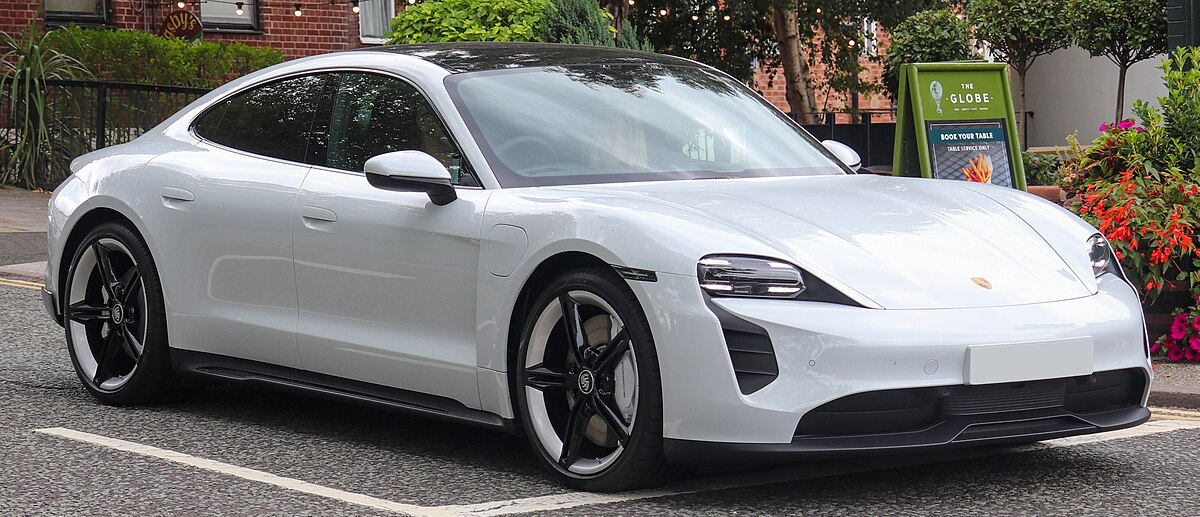
The aesthetic integration of the charging port demonstrates Porsche’s attention to detail and commitment to design excellence. The port door seamlessly integrates into the front fender’s sculpture, maintaining the Taycan’s flowing lines while providing practical functionality.
The illuminated Porsche crest that activates during charging adds a premium touch that reinforces brand identity while serving a practical purpose by indicating charging status from a distance.
Safety considerations influenced Porsche’s port placement decision. The front right position keeps charging activities away from rear traffic in parking lots and garages, reducing the risk of accidents during connection and disconnection.
The position also allows drivers to monitor charging progress and cable security without walking around the vehicle, particularly valuable in unfamiliar or potentially unsafe environments.
From a technical perspective, the front placement offers packaging advantages that Porsche leveraged to optimize the Taycan’s sophisticated charging system.
The shorter electrical runs from the port to the onboard charging electronics improve efficiency and reduce weight compared to rear-mounted alternatives.
This positioning also facilitates better thermal management of charging components, critical for maintaining the high charging speeds that define the Taycan’s capabilities.
The front right placement proves particularly advantageous at destination charging locations commonly found at hotels, restaurants, and shopping centers.
These installations often feature perpendicular parking arrangements where rear-mounted ports might require awkward cable routing or vehicle repositioning. The Taycan’s front placement accommodates these scenarios gracefully while maintaining a professional appearance. Porsche’s choice also demonstrates forward-thinking consideration for autonomous parking scenarios.
As self-parking technology evolves, vehicles equipped with front-mounted ports can more easily align with charging infrastructure using forward-facing sensors and cameras, potentially simplifying the automated charging process that will become increasingly important in future mobility solutions.
3. BMW iX – Front Left Practical Excellence
BMW’s placement of the charging port on the front left fender of the iX represents a thoughtful evolution of the company’s EV design philosophy, combining practical functionality with its characteristic attention to user experience.
This positioning demonstrates BMW’s deep understanding of both American and European charging infrastructure while maintaining the brand’s commitment to intuitive operation and premium aesthetics.
The front left placement offers distinct advantages in the context of typical parking and traffic patterns. In right-hand traffic countries, this positioning naturally aligns with curbside charging installations and allows drivers to approach charging stations from the safest angle.
The left-side placement proves particularly beneficial at street-side charging stations where right-side ports might conflict with traffic flow or require crossing active travel lanes.
BMW’s engineering team analyzed real-world charging scenarios when selecting this position. At shopping centers and destination charging locations, the front left placement accommodates the majority of parking lot designs and traffic flow patterns.
The position allows for natural approach angles that don’t require unusual maneuvering or backing up, skills that not all drivers possess or feel comfortable performing in crowded parking areas.
Home charging integration represents another area where BMW’s choice excels. The front left placement works exceptionally well with wall-mounted chargers installed on either side of a garage, providing flexibility for various home configurations.
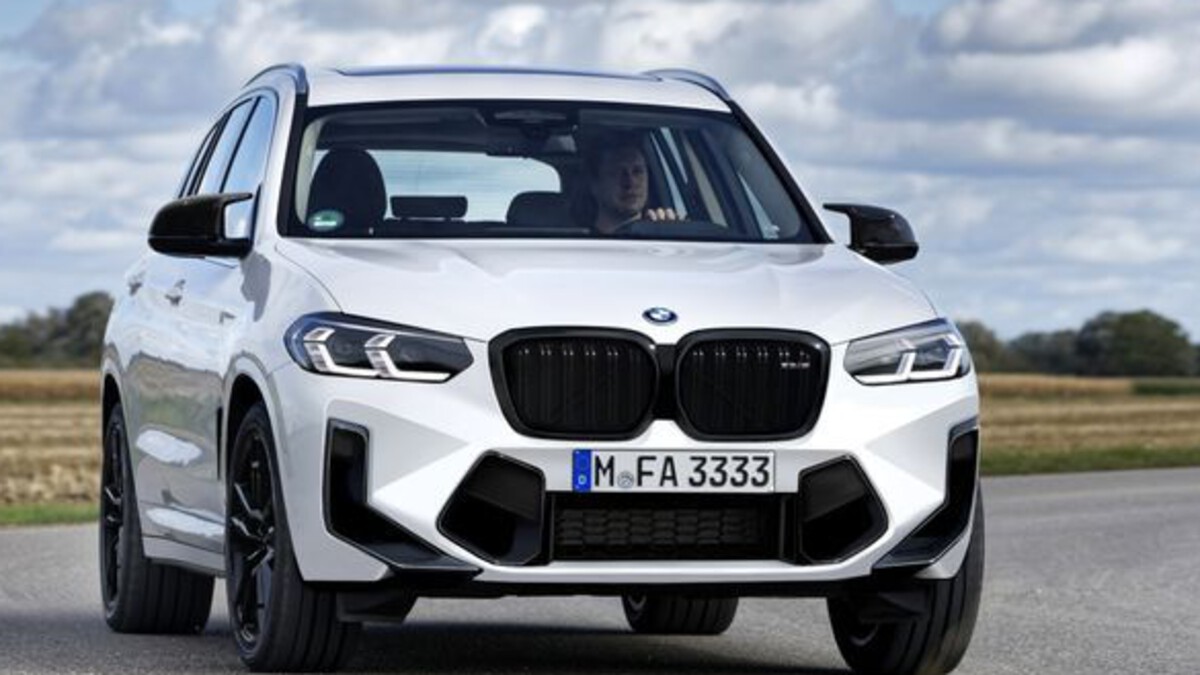
The positioning eliminates the need to route charging cables across walkways or around the vehicle’s rear, reducing tripping hazards and maintaining cleaner garage organization. The front placement also allows homeowners to easily monitor charging progress without entering the garage or walking around the vehicle.
The aesthetic integration of the charging port reflects BMW’s sophisticated design language and attention to detail. The port door features distinctive BMW kidney grille-inspired elements that create visual continuity with the vehicle’s front fascia design.
The illuminated ring around the port provides clear charging status indication while maintaining the premium appearance that BMW customers expect. The seamless integration into the front fender maintains the iX’s bold architectural presence while serving practical functions.
From a technical standpoint, the front left placement offers packaging advantages that BMW leveraged to optimize the iX’s advanced charging capabilities.
The position facilitates efficient routing of high-voltage charging cables and provides better access for service and maintenance procedures. The front mounting also allows for superior thermal management of charging components, critical for maintaining consistent charging performance across various ambient conditions.
Safety considerations influenced BMW’s port placement decision. The front left position keeps charging activities in the driver’s primary field of vision, allowing for better situation awareness during connection and disconnection procedures.
This positioning also minimizes exposure to vehicle traffic, particularly important at busy public charging locations where safety remains paramount. The integration with BMW’s connected services ecosystem further enhances the practical advantages of this port placement.
The BMW app can guide drivers to optimal parking positions at charging stations based on the port location, and the vehicle’s advanced parking assistance systems can automatically position the iX for optimal charging alignment, leveraging the front-mounted sensors and cameras to achieve precise positioning.
4. Audi e-tron GT – Rear Right Sophistication
Audi’s placement of the charging port on the rear right of the e-tron GT exemplifies the brand’s approach to combining sophisticated engineering with practical elegance.
This positioning represents a carefully calculated decision that balances aesthetic integration, functional accessibility, and user experience considerations that define Audi’s premium EV strategy.
The rear right placement creates a unique charging experience that distinguishes the e-tron GT while providing exceptional versatility across diverse charging scenarios.
The rear right positioning offers compelling advantages in the context of luxury vehicle ownership and usage patterns. This placement naturally accommodates valet parking scenarios common at upscale venues, allowing service personnel to access charging without requiring specific instructions or familiarization with unusual port locations.
The positioning also provides discrete charging capability that maintains the vehicle’s elegant profile while enabling convenient operation. Audi’s engineering analysis considered the premium charging infrastructure that e-tron GT owners typically access.
At high-end destination charging locations found at luxury hotels, exclusive resorts, and premium shopping venues, the rear right placement accommodates various installation approaches while maintaining the sophisticated appearance that befits the vehicle’s positioning.
The location works exceptionally well with premium charging stations that feature longer cables and more flexible positioning options. Home charging scenarios particularly benefit from Audi’s thoughtful placement decision. The rear right position provides excellent compatibility with garage configurations typical of luxury home installations.
Whether parking in spacious multi-car garages or covered parking areas, the port remains easily accessible without compromising vehicle positioning or creating aesthetic disruptions. The placement allows for charging cables to be routed discreetly while maintaining a clean, organized garage appearance.
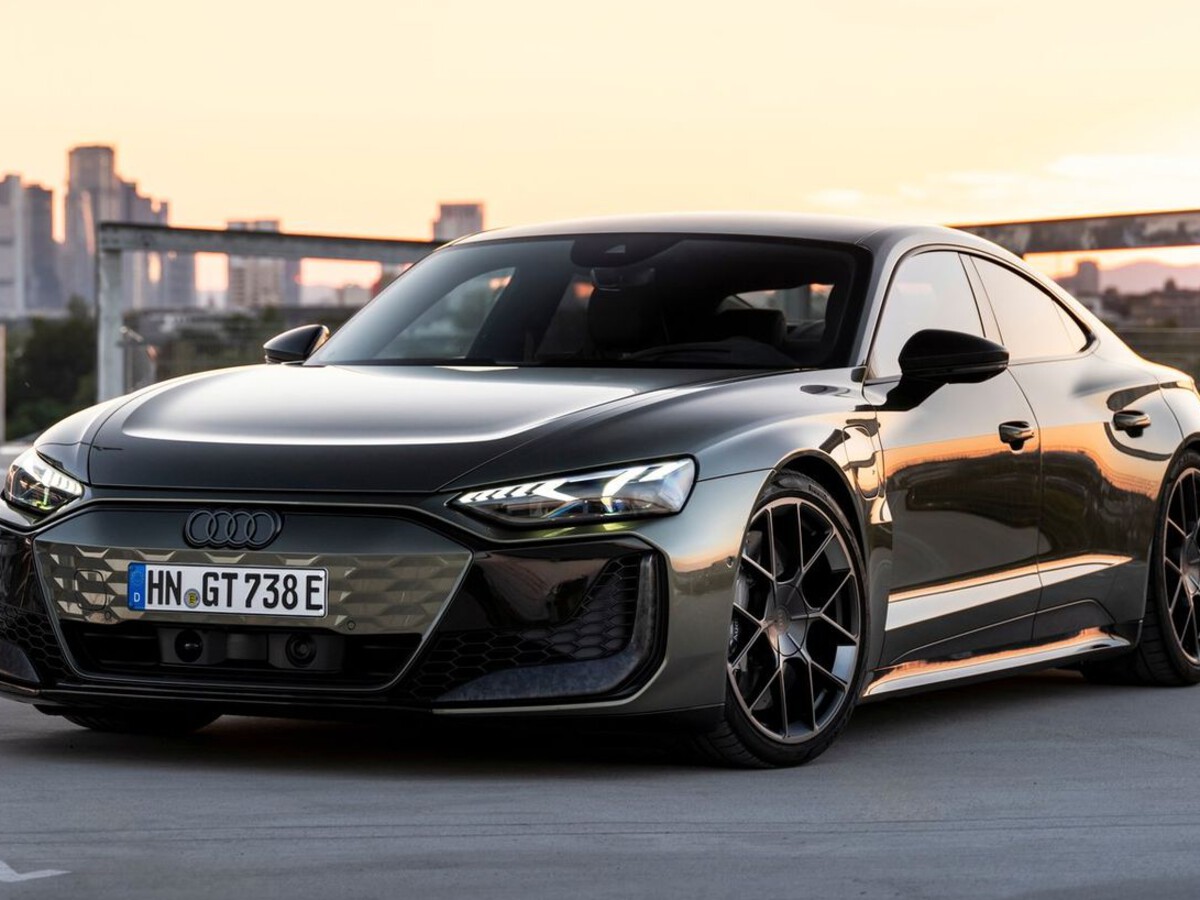
The aesthetic integration demonstrates Audi’s commitment to design excellence and attention to detail. The charging port door features subtle quattro badging and precision-crafted surfaces that maintain the e-tron GT’s flowing rear fender sculpture.
The integrated LED lighting provides sophisticated charging status indication while complementing the vehicle’s signature lighting design elements. The seamless integration preserves the rear three-quarter view that represents the most dramatic angle of the e-tron GT’s design.
From a technical perspective, the rear right placement offers packaging advantages that Audi leveraged to optimize the e-tron GT’s performance-oriented charging system.
The position provides optimal routing for the high-voltage charging cables while maintaining proper separation from other electrical systems. The rear mounting also facilitates superior thermal management, particularly important for the high-performance charging capabilities that define the e-tron GT’s technical specifications.
Safety considerations influenced Audi’s port placement strategy. The rear right position minimizes exposure to pedestrian traffic areas while maintaining safe access for charging operations.
This positioning allows users to approach the charging port from the side rather than from behind the vehicle, reducing risks associated with backing vehicles or limited visibility situations common in parking structures.
The rear right placement proves particularly advantageous at premium charging networks that cater to luxury vehicle owners. These installations often feature more spacious charging bays and higher-quality equipment that accommodate the specific requirements of high-end EVs.
The e-tron GT’s port position works exceptionally well with these premium installations, creating an integrated charging experience that matches the vehicle’s overall quality level.
Audi’s choice also demonstrates consideration for the global nature of luxury vehicle ownership. The rear right placement provides consistent functionality across different driving environments and charging infrastructure standards, important for owners who travel internationally or relocate between markets.
This positioning maintains optimal compatibility regardless of local traffic patterns or infrastructure conventions. The integration with Audi’s advanced driver assistance systems further enhances the practical advantages of this port placement.
The vehicle’s rear-facing sensors and cameras can assist with precise positioning at charging stations, while the advanced parking systems can automatically align the vehicle for optimal charging access, leveraging the sophisticated technology package that defines the e-tron GT experience.
Also Read: 5 Pickups With Best Factory Bed Lighting And 5 With None
5. Mercedes EQS – Front Right Premium Integration
Mercedes-Benz’s placement of the charging port on the front right of the EQS represents the pinnacle of luxury EV design integration, combining the brand’s legendary attention to user experience with sophisticated engineering solutions.
This positioning exemplifies Mercedes’ approach to creating seamless, intuitive interfaces that enhance the ownership experience while maintaining the aesthetic excellence that defines the brand’s flagship vehicles.
The front right placement demonstrates Mercedes’ deep understanding of luxury vehicle usage patterns and owner expectations. This position provides immediate visual confirmation of charging connection status from the driver’s perspective, eliminating uncertainty about proper connection or charging progress.
The front mounting also facilitates easier alignment with charging stations, particularly important for the EQS’s substantial dimensions, where precise positioning becomes critical for optimal charging access.
Mercedes’ engineering team prioritized user convenience when selecting this port location. At destination charging locations frequented by luxury vehicle owners, premium hotels, exclusive venues, and high-end shopping destinations, the front right placement accommodates various installation approaches while maintaining the sophisticated operation that EQS owners expect.
The positioning works exceptionally well with premium charging infrastructure that features advanced cable management and positioning systems. Home charging integration showcases Mercedes’ commitment to seamless luxury lifestyle integration.
The front right placement provides exceptional compatibility with high-end home charging installations, including premium wall-mounted units and integrated garage charging systems.
The position allows for discrete cable routing that maintains clean aesthetic lines while providing convenient access. The front mounting eliminates the need for owners to walk around their vehicle in potentially challenging weather conditions.
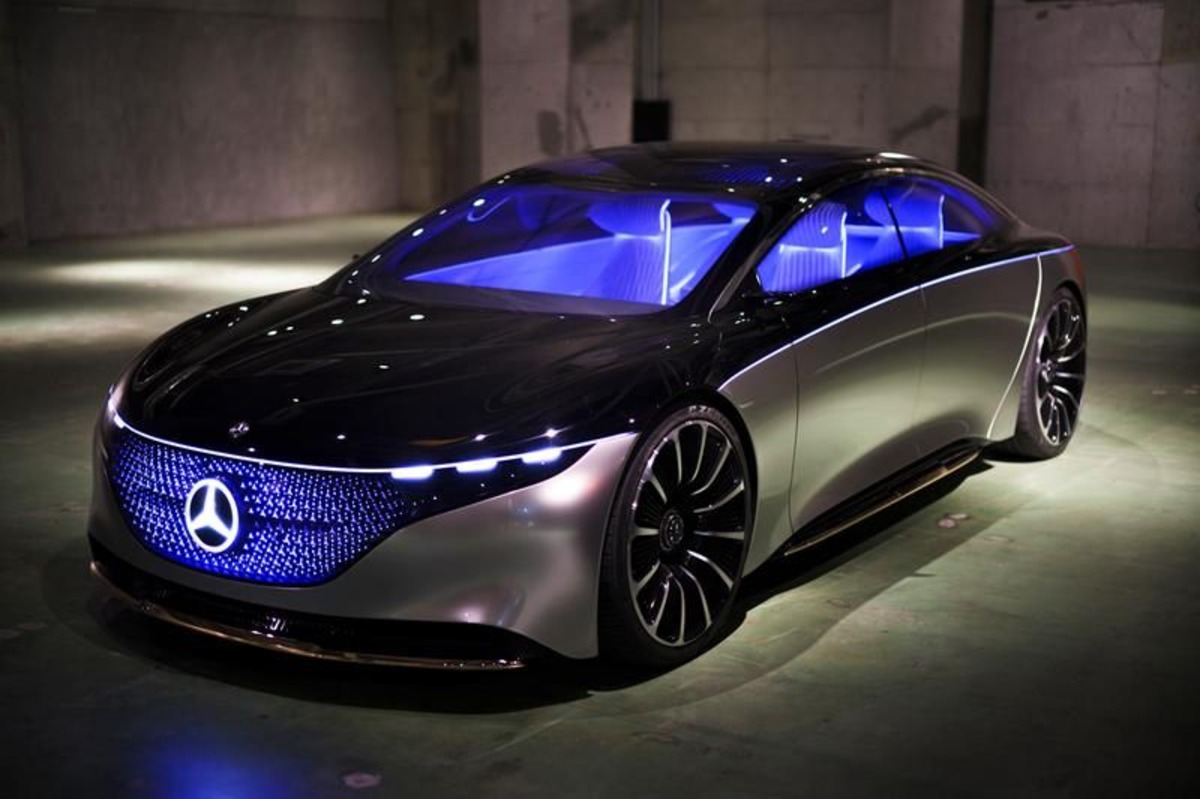
The aesthetic integration represents Mercedes’ mastery of luxury design principles applied to EV technology. The charging port door features precision-engineered surfaces and subtle Mercedes-Benz branding that maintains the EQS’s flowing front fender sculpture.
The integrated ambient lighting system provides sophisticated charging status indication while complementing the vehicle’s signature interior and exterior lighting design themes.
The seamless integration preserves the EQS’s dramatic front-three-quarter view that showcases the vehicle’s distinctive design language. From a technical standpoint, the front right placement offers significant packaging advantages that Mercedes leveraged to optimize the EQS’s advanced charging capabilities.
The position provides efficient routing for high-voltage charging systems while maintaining proper thermal management for the sophisticated charging electronics.
The front mounting also facilitates easier service access and maintenance procedures, important considerations for the complex technology integration that defines the EQS experience.
Safety considerations influenced Mercedes’ port placement strategy, reflecting the brand’s comprehensive approach to occupant and pedestrian protection.
The front right position provides optimal visibility for charging operations while minimizing exposure to traffic areas in parking facilities. This positioning allows users to maintain awareness of their surroundings while connecting charging equipment, particularly valuable in unfamiliar environments.
The integration with Mercedes’ MBUX infotainment system and connected services ecosystem further enhances the practical advantages of this port placement.
The system can provide precise guidance for optimal charging station positioning, while the advanced driver assistance features can automatically align the EQS for perfect charging access, leveraging the comprehensive sensor suite and processing power that defines the Mercedes luxury technology experience.
5 EVs with Most Awkward Charging Port Locations
These poorly positioned electric vehicles require challenging cable management due to inconvenient port placement and awkward access configurations that complicate routine charging operations across different parking situations and charging infrastructure designs.
Their problematic engineering includes low-mounted ports, difficult-to-reach locations, and restrictive door mechanisms that create cable routing difficulties and potential damage risks during normal charging procedures.
From requiring specific parking angles to accommodate cable length limitations to forcing owners into uncomfortable positions during connection attempts, these charging ports demand extra attention and careful handling to maintain functionality.
Owners discover that while these EVs offer impressive electric performance, their charging port design creates daily inconveniences and requires modified parking strategies to achieve reliable connections at various charging locations throughout regular driving routines.
1. Chevrolet Bolt EV – Front Left Nightmare
The Chevrolet Bolt EV’s front left charging port placement represents one of the most problematic design decisions in modern EV history, creating daily frustrations that transform routine charging into an exercise in patience and problem-solving.
This positioning, while seemingly logical on paper, fails catastrophically in real-world applications and demonstrates how poor ergonomic planning can undermine an otherwise competent electric vehicle.
The fundamental issue with the Bolt’s front left placement becomes immediately apparent at the majority of public charging stations. Most DC fast charging installations position their cables and equipment to accommodate rear-mounted ports, following the early Tesla template that has become an informal industry standard.
The Bolt’s front positioning forces drivers into awkward parking positions that often require backing into spaces a maneuver many drivers find uncomfortable and challenging, particularly in busy charging locations with limited visibility and tight quarters.
The cable management issues created by this placement are genuinely problematic. At most charging stations, the Bolt’s front left port requires the charging cable to stretch across the vehicle’s front end, creating pedestrian hazards and potential cable damage from other vehicles or shopping carts in parking areas.
The cable routing often blocks access to the driver’s door or creates tripping hazards that force users to walk around stretched cables, transforming simple charging stops into obstacle courses.
Home charging scenarios reveal additional problems with Chevrolet’s design choice. The front left placement creates significant challenges for garage installations, particularly in standard residential garages where space is limited.
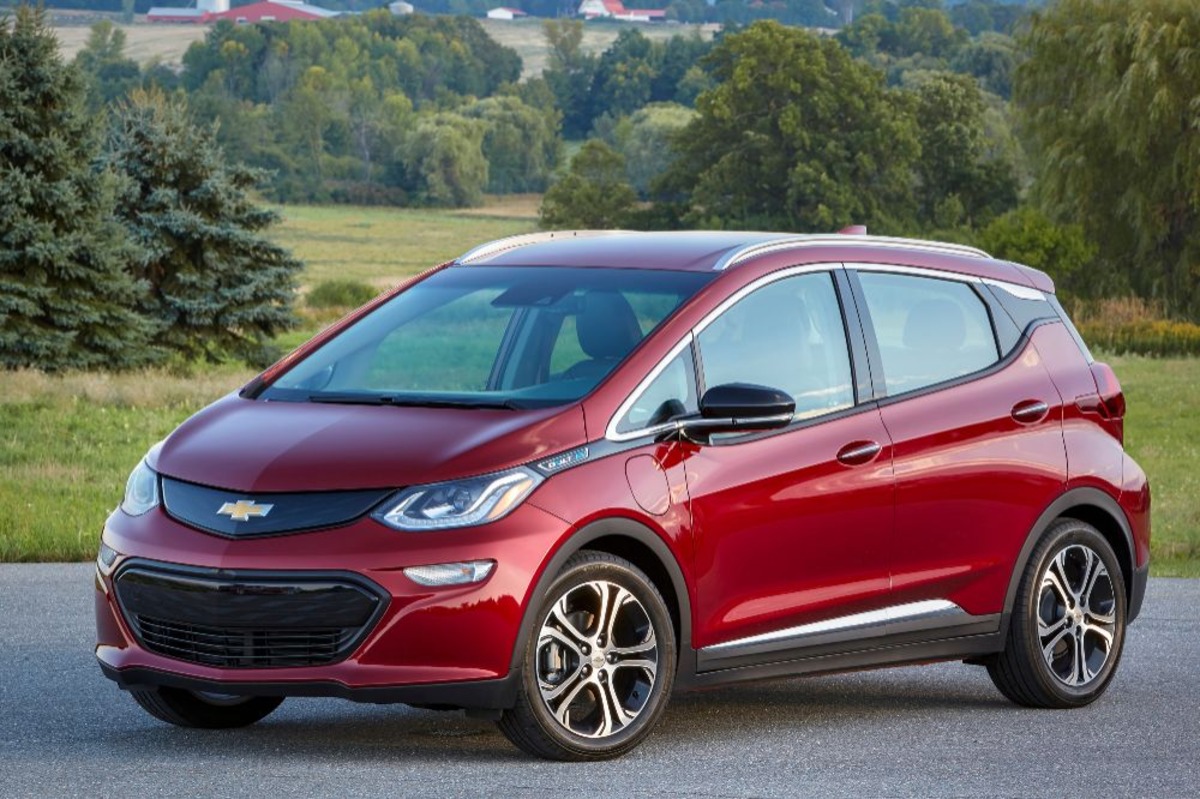
Homeowners often find themselves forced to install charging equipment in inconvenient locations or route cables across walking areas to accommodate the port position.
The front mounting also means charging cables must be stretched across the vehicle’s front end during home charging, creating organizational challenges and potential damage risks.
The aesthetic integration of the Bolt’s charging port appears as an afterthought rather than a considered design element. The port door disrupts the front fender’s clean lines while providing minimal weather protection or visual appeal.
The basic plastic construction and lack of integrated lighting or status indicators create a cheap appearance that reinforces the vehicle’s budget positioning but fails to provide essential functionality that users expect from modern EV charging interfaces.
From a safety perspective, the front left placement creates several concerning scenarios. At roadside charging stations or street-side installations, users must approach the charging port from the traffic side of the vehicle, increasing exposure to moving vehicles and reducing situational awareness.
The positioning also requires users to stand in front of their vehicle during connection procedures, potentially blocking other drivers’ visibility and creating additional safety hazards in busy parking areas.
The service and maintenance implications of the front left placement add another layer of frustration for Bolt owners. Many service facilities lack familiarity with the unusual port location, leading to confusion during service appointments and potential complications during charging system repairs.
The front placement also makes the charging port more vulnerable to collision damage from minor parking incidents, a common occurrence that can result in expensive repairs and extended downtime.
2. Nissan Leaf – Front Center Catastrophe
The Nissan Leaf’s front center charging port placement stands as perhaps the most bewildering design decision in EV history, creating a charging experience so fundamentally flawed that it seems designed to frustrate users at every possible opportunity.
This positioning, unique among major EV manufacturers, demonstrates how theoretical design concepts can fail spectacularly when confronted with real-world charging infrastructure and user behavior patterns.
The front center placement creates immediate and obvious problems at virtually every type of charging installation. DC fast charging stations, designed around standard automotive proportions and cable reach requirements, simply cannot accommodate the Leaf’s bizarre port location without forcing drivers into dangerous or impossible parking positions.
The center mounting requires either perfect alignment with charging equipment, nearly impossible in most installations, or cable stretching that exceeds the physical limitations of most charging cables. The aesthetic disaster of the front center placement cannot be overstated.
The charging port door, positioned prominently in the center of the vehicle’s nose, destroys any semblance of coherent design language and creates an awkward focal point that draws attention for all the wrong reasons.
The placement looks like an afterthought, as if Nissan’s designers forgot to plan for a charging port and simply cut a hole in the most convenient location. The result is a vehicle that appears permanently disfigured, with a gaping maw where elegant design should reside.
Cable management becomes a nightmare scenario with the Leaf’s center placement. At public charging stations, the charging cable must stretch across the vehicle’s entire front end, creating massive pedestrian hazards and blocking access to the vehicle’s front-mounted hood and service areas.
The cable routing often interferes with parking lot traffic flow, as other vehicles cannot pass close to a charging Leaf without risking cable damage or pedestrian safety issues.
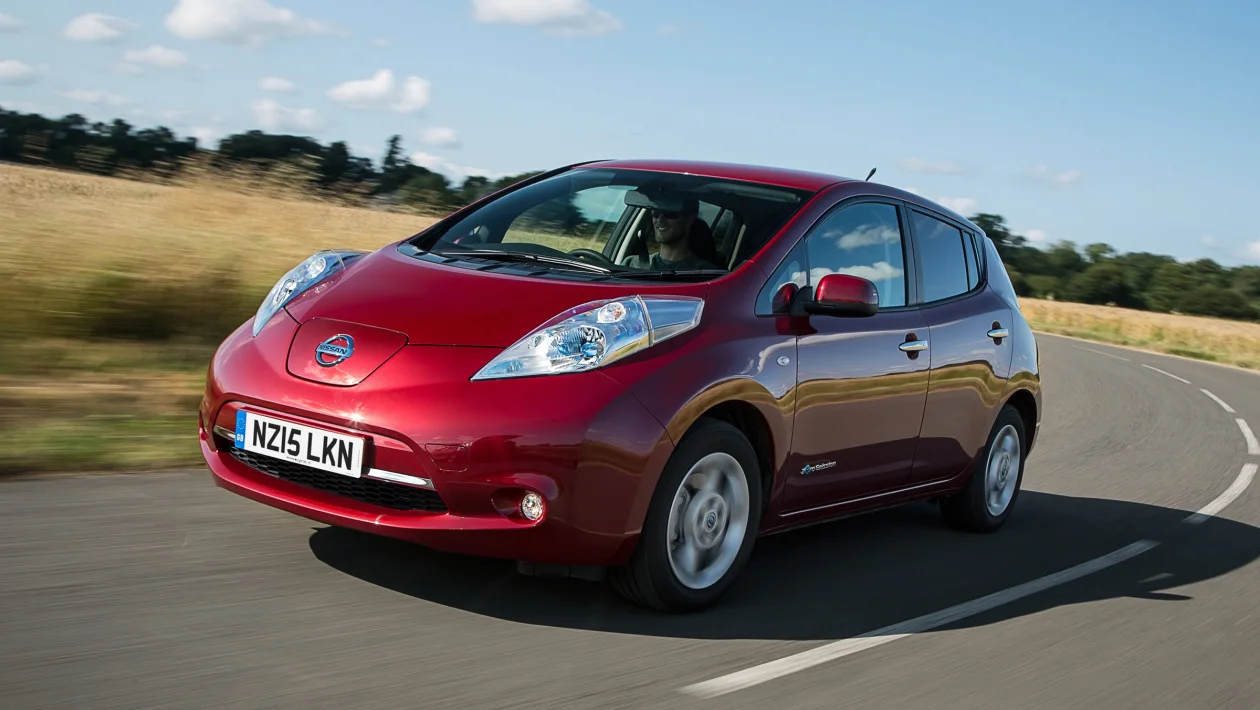
Home charging scenarios reveal the complete lack of practical consideration in Nissan’s design process. The front center placement forces homeowners to position charging equipment directly in front of their vehicle’s parking position, creating an obstacle for garage use and requiring precise parking alignment that many drivers cannot consistently achieve.
The positioning also means charging cables must stretch across the vehicle’s front end during every home charging session, creating organizational nightmares and potential damage risks.
The safety implications of the front center placement are genuinely concerning. Users must approach the charging port from directly in front of the vehicle, positioning themselves in the most dangerous possible location relative to other traffic.
This placement requires users to work directly in vehicle travel paths and eliminates any protection from the vehicle’s mass during charging operations. The positioning also creates visibility issues for other drivers who cannot easily see pedestrians working at the front center of parked vehicles.
From a technical standpoint, the front center placement represents poor engineering execution that compromises charging performance and reliability.
The position requires complex cable routing through the vehicle’s front structure, creating potential failure points and reducing charging efficiency.
The center mounting also complicates thermal management of charging components, as the position provides poor airflow and heat dissipation compared to more conventional side-mounted alternatives.
The long-term implications of Nissan’s design choice extend beyond immediate usability concerns. As charging infrastructure evolves and standardizes around more logical port placements, Leaf owners find themselves increasingly isolated from new charging developments.
The incompatibility with emerging charging technologies and installation standards effectively reduces the vehicle’s future utility and resale value, creating financial consequences that extend long beyond the initial purchase decision.
3. BMW i3 – Rear Right Inconvenience
The BMW i3’s rear right charging port placement, while not as catastrophically problematic as some alternatives, represents a series of poor design decisions that create ongoing inconvenience and frustration for owners.
This positioning demonstrates how seemingly minor placement decisions can accumulate into significant usability issues that undermine the overall ownership experience and highlight the importance of comprehensive user experience testing in EV development.
The fundamental issue with the i3’s rear right placement lies in its incompatibility with standard charging infrastructure layouts and user behavior patterns.
Most public charging stations position equipment to accommodate driver-side rear ports or front-mounted alternatives, following patterns established by early EV pioneers.
The i3’s passenger-side rear placement forces drivers into unusual parking positions that often conflict with charging station layouts and traffic flow patterns in parking areas.
Cable management issues plague the i3’s charging experience across virtually all charging scenarios. At public DC fast charging stations, the rear right placement often requires cables to stretch across the vehicle’s rear end and around to the passenger side, creating awkward routing that can block access to adjacent parking spaces or create pedestrian hazards.
The cable positioning also interferes with rear cargo access during charging sessions, a particular problem for the i3’s distinctive rear-opening cargo door design. Home charging scenarios reveal additional problems with BMW’s placement decision.
The rear right position creates challenges for garage installations, particularly in standard residential garages where space constraints and electrical panel locations often require charging equipment to be mounted on the driver’s side wall.
Homeowners frequently find themselves forced to route charging cables around their vehicle or across walking areas to reach the oddly positioned port, creating organizational problems and potential safety hazards.
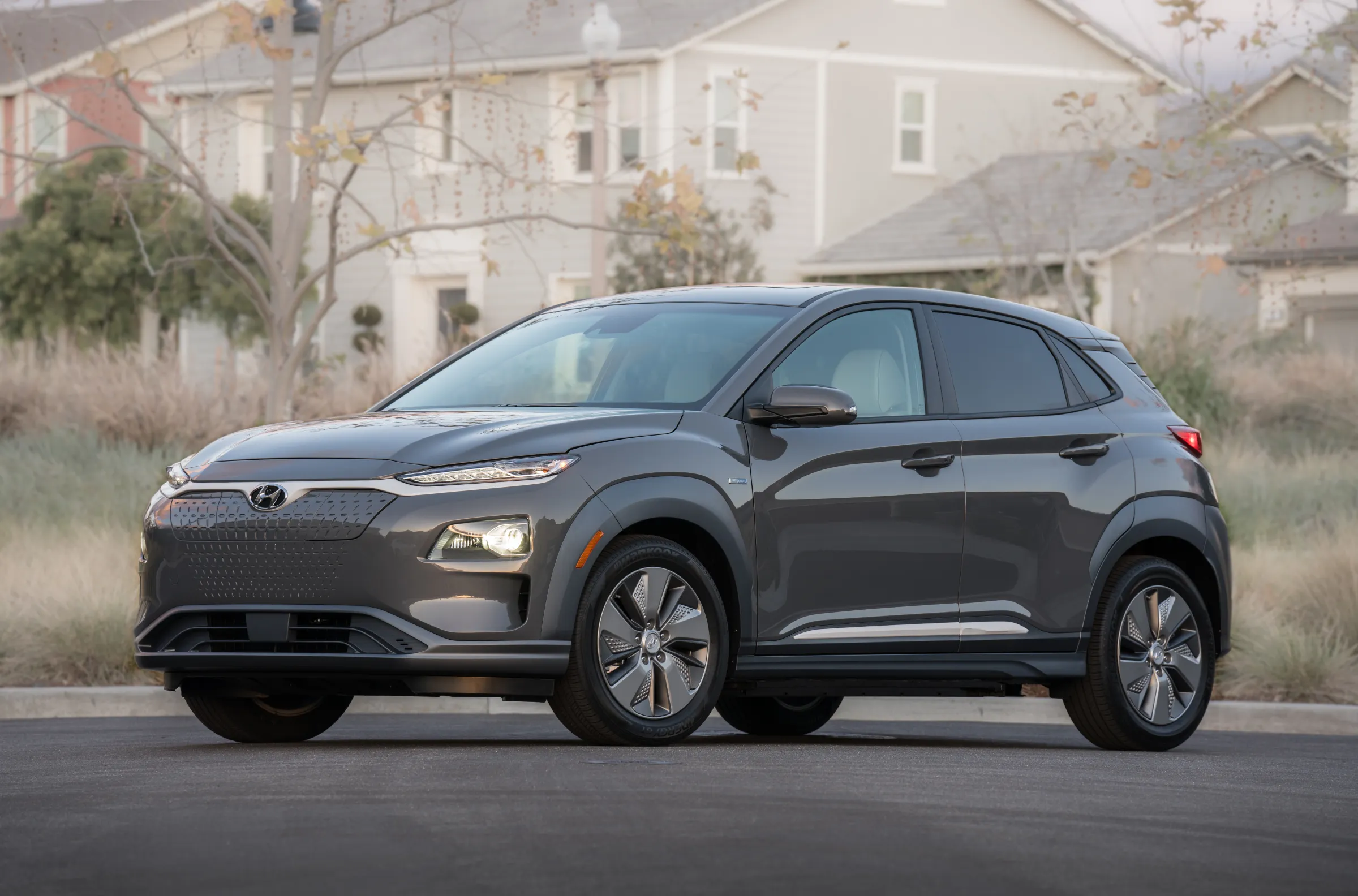
The aesthetic integration of the i3’s charging port reflects the vehicle’s quirky design philosophy but fails to provide practical functionality. The port door’s integration into the rear quarter panel maintains the i3’s distinctive visual character but provides minimal weather protection and lacks the sophisticated status indicators found on more premium BMW models.
The positioning also disrupts the clean lines of the rear three-quarter view, which represents one of the i3’s most successful design angles. From a safety perspective, the rear right placement creates several concerning scenarios.
At busy charging locations, users must walk around to the passenger side of their vehicle to access the charging port, potentially positioning themselves in blind spots relative to other vehicles and reducing situational awareness.
The rear positioning also requires users to work behind their vehicle during connection procedures, creating visibility issues for other drivers and increasing accident risks in busy parking areas.
The technical implementation of the i3’s charging system reveals compromises that likely influenced the port placement decision. The rear right position accommodates the vehicle’s unique carbon fiber construction and unusual packaging constraints, but creates electrical routing challenges that limit charging efficiency and complicate service procedures.
The positioning also interferes with the i3’s distinctive thermal management system, potentially affecting charging performance in extreme weather conditions.
Public charging compatibility issues significantly impact the i3’s practicality for longer trips and public charging use. Many charging networks position equipment based on industry-standard port locations, making the i3’s rear right placement incompatible with optimal cable routing and parking positions.
Tesla Supercharger access, increasingly important for non-Tesla EVs, becomes particularly challenging with the i3’s unusual port location, effectively limiting access to the most extensive charging network.
The long-term ownership implications extend beyond immediate usability concerns. As charging infrastructure continues to evolve and standardize, the i3’s unusual port placement becomes increasingly problematic.
New charging technologies and installation standards may not accommodate the rear right positioning, potentially limiting the vehicle’s future charging capabilities and reducing its long-term value proposition for current and prospective owners.
4. Volkswagen ID.4 – Front Left Frustration
The Volkswagen ID.4’s front left charging port placement represents a significant design misstep that transforms routine charging into a source of ongoing frustration for owners.
While front-mounted ports can work well in certain implementations, Volkswagen’s execution creates a constellation of problems that demonstrate poor understanding of charging infrastructure realities and user behavior patterns.
This positioning choice reveals the challenges of adapting traditional automotive design thinking to the unique requirements of electric vehicle functionality.
The primary issue with the ID.4’s front left placement stems from its incompatibility with the majority of DC fast charging installations across North America.
Most high-speed charging stations position their equipment and cables to accommodate rear-mounted ports, following the template established by Tesla and adopted by many subsequent manufacturers.
The ID.4’s front left position forces drivers into awkward backing maneuvers at charging stations, a skill many drivers lack confidence in performing, particularly in busy locations with limited visibility and time pressure.
Cable management becomes a persistent source of frustration with the ID.4’s port placement. At most charging stations, the front left position requires cables to stretch across the vehicle’s front end, creating pedestrian hazards and potential damage risks from shopping carts, other vehicles, or foot traffic in busy parking areas.
The cable routing often blocks access to the driver’s door during charging sessions, forcing occupants to exit from the passenger side or wait for charging completion before accessing the vehicle.
Home charging scenarios reveal additional complications with Volkswagen’s design choice. The front left placement creates challenges for garage installations, particularly in standard residential garages where electrical panels and available wall space often favor right-side installations.
Homeowners frequently find themselves forced to route charging cables across their garage or install charging equipment in less convenient locations to accommodate the unusual port position, creating organizational problems and potential safety hazards.
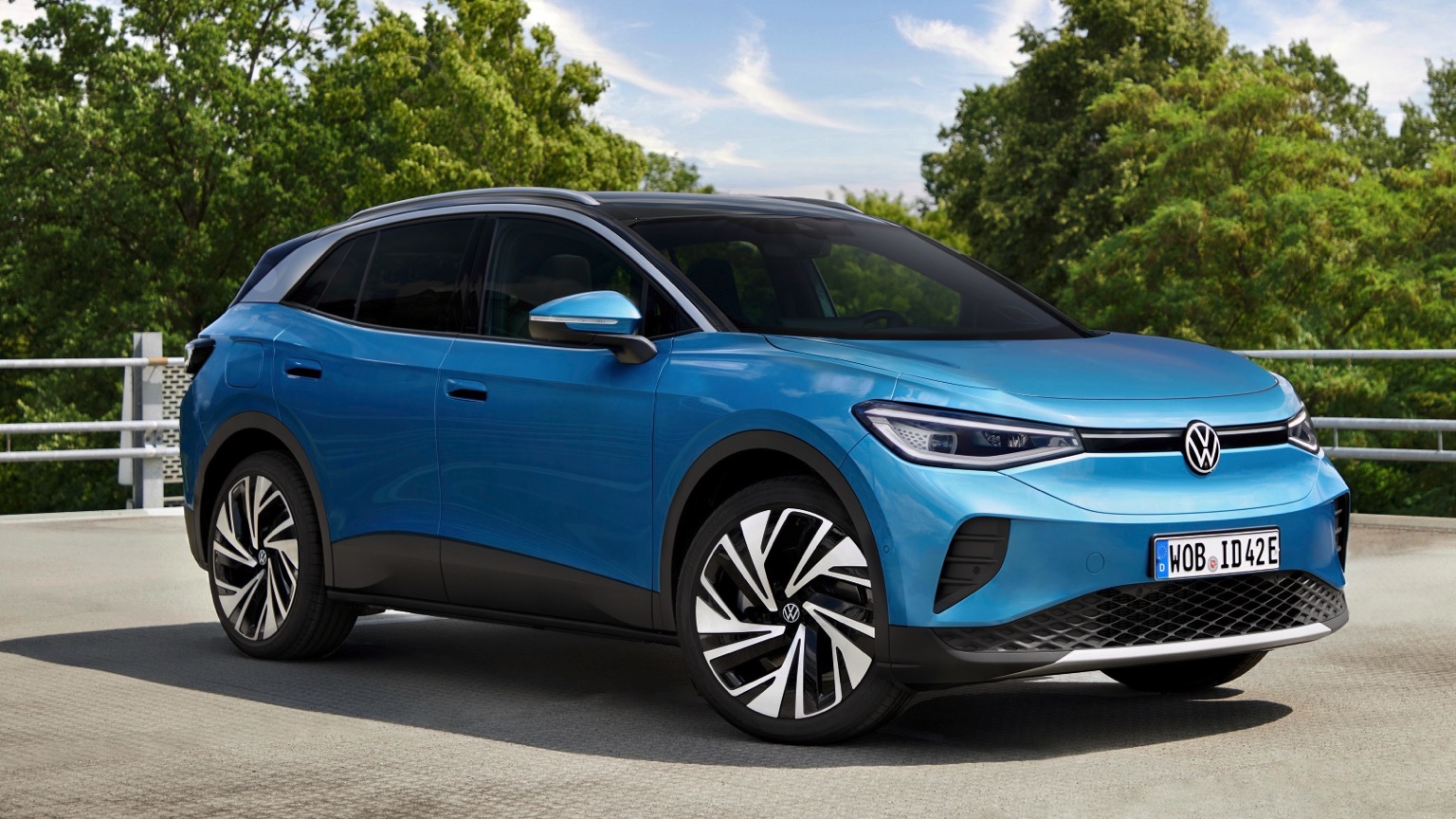
The aesthetic integration of the ID.4’s charging port reflects Volkswagen’s generally conservative design philosophy but fails to provide sophisticated functionality or visual appeal.
The port door maintains the vehicle’s clean front fender lines but lacks the premium touches and integrated lighting found on more expensive alternatives.
The basic execution reinforces the ID.4’s mainstream positioning but provides minimal charging status feedback or weather protection beyond basic functionality.
Public charging compatibility represents a significant limitation of the ID.4’s port placement. Tesla Supercharger stations, increasingly opening to other manufacturers, present particular challenges for the ID.4’s front left configuration.
The fixed positioning and cable lengths of Tesla equipment often cannot accommodate the unusual port location, effectively excluding ID.4 owners from portions of the most extensive and reliable charging network in North America.
The long-term implications of Volkswagen’s design choice extend beyond immediate usability concerns. As charging infrastructure continues to evolve and standardize around more logical port placements, ID.4 owners may find themselves increasingly isolated from new charging developments.
The incompatibility with emerging charging technologies and installation standards could reduce the vehicle’s future utility and negatively impact resale values, creating financial consequences that extend well beyond the initial purchase decision.
5. Kia EV6 (Pre-2025) – Right Side Regret
The original Kia EV6’s right side charging port placement represents one of the most glaring examples of how manufacturers can overlook critical infrastructure compatibility in their rush to bring EVs to market.
This positioning choice, corrected in the 2025 model year update, created such significant real-world problems that Kia was forced to relocate the port mid-generation an unprecedented admission of design failure that highlights the importance of comprehensive charging infrastructure analysis during vehicle development.
The fundamental flaw in the original EV6’s right side placement becomes immediately apparent when attempting to use Tesla Supercharger stations, which represent the most extensive and reliable fast charging network in North America.
Tesla’s strategic decision to open their network to other manufacturers should have been cause for celebration among EV6 owners, but the right side port placement makes Supercharger access nearly impossible in most installations.
The fixed cable lengths and positioning of Tesla equipment simply cannot accommodate the EV6’s unusual port location, effectively excluding owners from this critical charging resource.
Cable management nightmares plague EV6 owners at virtually every type of charging installation. The right side placement requires cables to stretch across the vehicle’s width at most charging stations, creating significant pedestrian hazards and potential damage risks.
At busy charging locations, the extended cable routing blocks adjacent parking spaces and creates obstacles for other vehicles and pedestrians, transforming simple charging stops into complex maneuvering exercises that frustrate both EV6 owners and other facility users.
Home charging scenarios reveal additional problems with Kia’s original design choice. The right side placement creates complications for garage installations, particularly in standard residential garages where electrical panels and available wall space typically favor left-side charging equipment mounting.
Homeowners often find themselves forced to install charging equipment in inconvenient locations or route cables across their garage space to accommodate the unusual port position, creating organizational problems and potential safety hazards that persist throughout ownership.
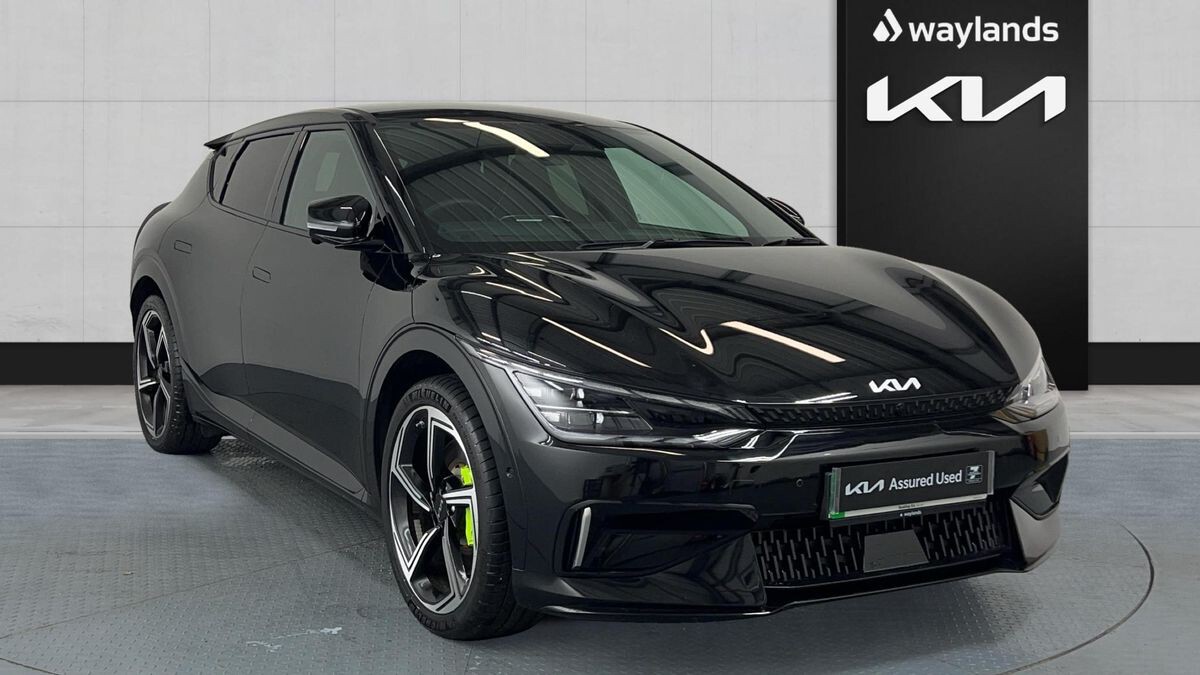
The aesthetic integration of the original EV6’s charging port maintains the vehicle’s distinctive design language but fails to provide practical functionality that matches the vehicle’s otherwise impressive capabilities.
The port door’s integration into the right side fender preserves clean body lines but provides minimal weather protection and lacks sophisticated status indicators that would enhance the user experience. The positioning also disrupts optimal cable routing and creates visual clutter during charging operations.
Public charging compatibility issues significantly impact the EV6’s practicality for long-distance travel and public charging use. Beyond the Tesla Supercharger incompatibility, many third-party charging networks position equipment based on industry-standard port locations, making the EV6’s right side placement problematic for optimal cable routing and parking positions.
This incompatibility can extend charging session times and create frustration that undermines the otherwise positive EV6 ownership experience. Workplace charging scenarios present ongoing challenges for original EV6 owners who rely on employer-provided charging facilities.
Most corporate installations assume left-side or rear port locations and may not accommodate the EV6’s right side placement without forcing drivers into inconvenient parking positions or creating conflicts with other employees.
he unusual port location often requires special accommodation from facility managers and may limit access to preferred parking areas or charging equipment.
The original EV6’s charging port placement serves as a cautionary tale for the entire automotive industry about the critical importance of infrastructure compatibility in EV design.
The significant costs associated with relocating the port mid-generation including engineering changes, manufacturing modifications, and customer satisfaction issues demonstrate how seemingly small design decisions can have far-reaching consequences.
Kia’s experience with the EV6 charging port will likely influence port placement decisions across the industry for years to come, serving as a reminder that successful EV design requires a comprehensive understanding of charging infrastructure realities and user behavior patterns.
Also Read: 5 SUVs With Best Water-fording Depth And 5 With Low Clearance

